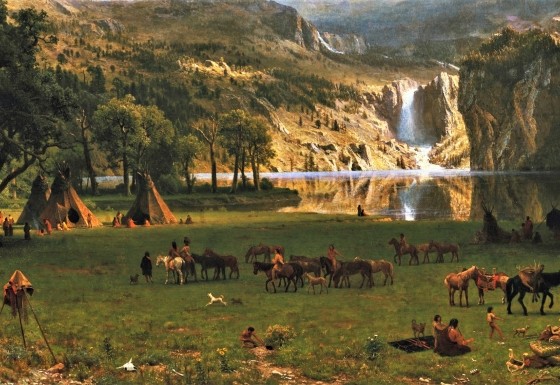
U.S. Congressional Serial Set
1817-1994
- A foundational resource for studying American history, society and politics
- The definitive digital edition of more than 370,000 original government publications
- Superior search results, unique browse capabilities and comprehensive bibliographic records
The single most important archive of American government publications, the U.S. Congressional Serial Set is an incomparably rich source of primary and secondary material on the people, issues and events that shaped the United States. Spanning nearly two centuries of American and world history, this monumental collection of the Reports, Documents and Journals of the U.S. Senate and U.S. House of Representatives covers myriad subjects. Among them are the institution of slavery in Antebellum America, the expansion of the American West, the impeachment of presidents, the founding of the United Nations, public and private legislation, and much more.
Presenting every cameral publication from the 15th through 103rd Congress, the U.S. Congressional Serial Set, 1817-1994 from Readex provides more than 370,000 individual publications originally bound in 14,000 volumes. This definitive digital edition contains a wealth of documents, illustrations, maps and charts that span cultural, legislative, military, political, social and scientific history. The countless topics addressed include women’s suffrage and civil rights; environment, energy and natural resources; Native American life; race relations, international relations; wars, colonialism and exploration; and investigations of all kinds.
Superior research results only from Readex
Readex used the original printed paper publications to create high-resolution digital images of every publication, including more than 74,000 maps. To ensure the best search results, Readex created unequalled indexing of not only subject terms, executive agency names and bill numbers but also personal, corporate, committee and geographic names. In addition, the Readex edition offers links from terms in bibliographic records for quick retrieval of related publications, a fully integrated subject thesaurus, cartographic indexing, and Open URLs for every publication. Catalog records in MARC format are also available.
Wide acclaim from leading scholars and librarians
Eric Foner, DeWitt Clinton Professor of History, Columbia University, writes that, “the Readex digital U.S. Congressional Serial Set is a great boon…making instantly accessible a wealth of information and documentation previously very difficult to locate and access.” Gerald L. Gill, Head of Reference and Government Documents, James Madison University, says it “provides essential primary sources in humanities, social sciences and even some science areas….the Serial Set is a virtual encyclopedia of America.”
Legislative and executive documents of the first 14 U.S. Congresses
Documenting a nation’s dramatic growth and expansion
How do U.S. Congressional Serial Set users access Serial Set Maps?
Access is available in four ways: 1) from all search pages of the U.S. Congressional Set; 2) from every Serial Set publication containing an indexed map; 3) from InfoWeb, the web page that provides access to all available NewsBank and Readex collections; and 4) by a direct link available to customers.
How do users of the Serial Set know which maps have been indexed?
Users can learn which maps have been indexed through the "covered years" text on the home page under Search Hints. Expanded information, including corresponding Congresses and Serial Set volumes can be found under Background/Product Status within the Help section.
What are a few of the special features of Serial Set Maps?
Features include: search and browse capabilities designed for maps; ability to search specifically by dates related to the maps rather than the dates assigned to Serial Set publications; indexing of subject and geographic locations specific to the maps; citation records providing map title, Serial Set publication, map date, issuing body, cartographer or author, coordinates, scale, content notes and geographic location and subject indexing; linking of related maps within a publication or multi-page maps to enable easy navigation; a process based on physical review of original publications to ensure that a high-resolution image and citation record is created for every map; citation records that can be emailed with a click; provision of suggested related search terms based on the acclaimed Readex Congressional Thesaurus.
What is the difference between a Serial Set citation search limited to maps and a Serial Set Maps search?
A Serial Set citation search limited to maps will return all publications with metadata meeting the search criteria that also include one or more maps. Such a search is made against the metadata applied to Serial Set publications, not the metadata applied to the Serial Set maps.
The same search in Serial Set Maps will return all maps with metadata meeting the search criteria. Map citation records do not contain all indexing terms that parent publications contain, nor do citation records of parent publications contain all indexing terms applied to maps within.
How is Readex Serial Set map indexing different than Readex Serial Set publication indexing?
A dedicated team of experienced map indexers is responsible for creating the Serial Set map citations. Map citations include metadata not relevant to Serial Set publications, such as scale and coordinates. Dates applied to the maps are also independent from the dates assigned to the publications. The terms applied are specific to the cartographer, subject and locations represented on the map, not to the Serial Set publication in which a map was published.
Which authority sources are used to index Serial Set maps?
Sources include the Getty Thesaurus of Geographic Names, the U.S. Geological Survey's Geographic Names Information System (GNIS), Library of Congress (LC) Authorities, National Agriculture Library (NAL) Thesaurus and specialized place name directories on the Internet.
In addition, a proprietary Vocabulary Authority, actively controlled, maintained and supplemented by Readex Serial Set editors, ensures consistent and extensive application of terms to like subjects, geographies and names in both the Serial Set and Serial Set Maps.
What expertise does the Readex map indexing team bring to this effort?
Donna Koepp is the Editor of the "CIS US Serial Set Index: Part XIV, Index and Carto-Bibliography of Maps, 1789-1969." Koepp holds an M.A. in Librarianship and has 32 years of experience as a Government Documents and Map Librarian.
Vicky Bedi has an M.S. in Library Science. Bedi has been a cataloger of maps in Dartmouth University Library Special Collections and Maps Collection. She has more than 11 years of related experience.
The map indexing team published "Rivers Run Through It: The U.S. Congressional Serial Set and Its Maps" in the April 2009 issue of the Readex Report.
How many maps appear in the Readex U.S. Congressional Serial Set, 1817-1980?
The total number of maps is 74,495. Each is accompanied by a citation record.
How does Readex's count of Serial Set maps account for individual maps that contain additional inset maps?
Inset maps are indexed as part of the larger map. Inset maps are not separately indexed, nor are they counted separately. Each map citation record counts as one map. In a small percentage of cases, a multi-page map is counted as one map, because it is indexed as a single map, although printed on more than one page.
How many Serial Set maps were originally printed in color?
We estimate that more than 13,000 of the 74,495 Serial Set maps were printed in color.
What are Readex's sources for the maps in its Serial Set?
Black and white maps are scanned from Serial Set volumes borrowed from the libraries of Dartmouth College, University of Vermont and the U.S. Senate. Color maps are scanned from those in the collection of the Geography and Map Division of the Library of Congress.
Why is the Library of Congress a superior source for these maps?
The Library of Congress has expertly removed the Serial Set maps from a rarely used Prestige Edition of the Serial Set and carefully stored them flat in folders. By using these superior maps, crease lines are less pronounced and other issues related to condition are minimal. At the Library of Congress's Geography and Map Division, these well-preserved maps can be digitized on a high quality jumbo scanner, reducing the number that must be stitched together from multiple images.
Are the digital images of the Serial Set maps prepared differently than other pages of the Serial Set publications?
Yes, digital images for maps are handled in different ways, depending on their size and color. Every map is digitized at 400 dpi, 24bit color. Maps contained within the standard page size of Serial Set volumes are scanned on a Kirtas APT BookScan. In addition, a high-resolution TIFF image is created in PhotoShop. Black-and-white maps larger than the standard page size are filmed with a Phase One P45 for Hasselblad and then created as TIFF images in PhotoShop. If more than one image is required to capture the whole map, the map stitching is also done in PhotoShop. Most color maps are scanned at the Library of Congress using their jumbo scanners.
In which formats are the Serial Set maps available for downloading and why?
Map images are available in PDF and TIFF formats. The PDF format is provided for consistency with the format provided for the pages of Serial Set publications. TIFF images are available to provide users with the capability to print over-sized maps to scale. TIFF images can also be used for geo-referencing.
Can users print large maps, that is, maps larger than an 8.5 x 11-inch sheet?
Yes. Users with standard printers can choose to print a selection from a larger map, or print on an 8.5 x 14-inch sheet. In addition, users can instruct their printer to "fit image to page." Those able to print on sheets larger than 8.5 x 14 may download TIFF images to a local drive and use local software to print.
What is geo-referencing? What kinds of users might want to use our TIFF images for this and why?
In simple terms, geo-referencing is placing coordinates on a map to fix its location on the face of the earth. It can be used to combine data from more than one map, and to enable comparisons of old data with current data.
Here's an example of how geo-referencing might be used with Serial Set Maps. The Serial Set's many Washington, D.C. maps present a treasure-trove of information, including instances of diseases and fatalities by block; location of schools; location of sewer and water lines; public transportation and much more. These maps are mostly presented on the same scale and projection, but no coordinates are given. By adding accurate latitude and longitude references, these maps can be compared with other maps, both historical and current, using today’s GIS technology.
When is Readex's indexing of the maps in the U.S. Congressional Serial Set, 1817-1994 expected to be complete?
Map indexing was completed in March 2013.
What perhaps surprising subjects are covered by Serial Set Maps?
Examples include the spread of diseases, both animal and human; evolution of air routes; railroad acquisitions and mergers, including railroad routes; Indian reservations, including migration and border changes; rivers, including development of navigation, exploration, locks and dams and flood control; public land and railroad surveys; Boxer Rebellion; Commodore Perry Exploration of the Orient; Jeannette Expedition; Philippine War; irrigation development in India; weather; Civil War; census information; voting and political districting and many others.
Could you please highlight a few Serial Set maps of special note?
Examples include the following: Atlas of color plates of federally controlled land in the District of Columbia; Plans for pneumatic tube facilities for postal delivery; Chart showing the original milestones of the District of Columbia by L'Enfant; A pair of world maps comparing areas that had been mapped in 1860 and 1915; Map depicting the poliomyelitis epidemic of 1916; maps relating to the Yakatut Bay, Alaska, earthquake of 1899, and illustrating the resultant "shattering" of Muir Glacier; Congressional district maps, 1909 and 1910; maps accompanying the U.S. Immigration Commission report on immigration, including racial/ethnic neighborhood maps of major U.S. cities; Historical map of the distribution of banking capital in New York State in 1836; maps relating to Jews and Eastern European ethnic groups from William Z. Ripley's The Races of Europe (1899); maps accompanying The Ethnogeography of the Tewa Indians, by linguist and anthropologist John Peabody Harrington; Holy Land map from Thomas Jefferson's Bible; map of the world by Leonardo da Vinci; Waldseemuller maps of the world from the 1500s; maps depicting historical boundary changes among U.S. states and territories; historical maps of the U.S. Military Academy at West Point; map accompanying report of frozen mammoth found in Siberia; Map illustrating Peary's North Pole Expedition (1898-1902); map containing data on aliens in prisons and charitable institutions in the United States; 31 battle and other maps related to World War I, including the Marne and Meuse-Argonne; Chronological map of the influenza epidemic of 1918 in the United States; Map of the United States showing routes of the principal explorers from 1501 to 1844; Geological reconnaissance maps of Alaska; maps of the National Parks from 1918, including tourist maps; Map showing the prehistoric migrations of the Slavs in Bohemia and Moravia; Map summarizing American deaths in the Mexican Revolution, 1910-1920; and many others.
How do users who leave the Serial Set to see a map citation return to where they were?
From a Serial Set Map citation or map image, users can click on the external link under "From Serial Set Publication" in the upper right quadrant.
What do Serial Set Map citations look like?
Here are two:
Title: Chart of part of the Bahama Islands showing the tracks ascribed to Columbus on his discovery of the New World. [Coast and Geodetic Survey report, 1880. No. 83]
Date: 1492
From Serial Set Publication:
Serial Set No. 1942, Session Vol. No.2
46th Congress, 3rd Session
S.Exec.Doc. 12, Page [Not Numbered]
Map No. 58
Event Date: 1492
Map Creation Date: April, 1881
Issuing Body:
U.S. Coast and Geodetic Survey (1878-1970)
Personal Names:
Barnett, E.
Becher, A.F.
Bright, W.T.
Columbus, Christopher
De Naverrete, M.F.
De Varnhagen, F.A.
Fox, Gustavus Vasa
Irving, Washington
O'Sullivan, T.J.
Owen, R.
Subjects:
Columbus' landfall in America (1492)
Discovery and exploration
Hydrographic surveying
Islands
U.S. Department of the Navy. Bureau of Navigation. Hydrographic Office
Acklins Island
Bahamas
Clarence Town, Bahamas
Long Island (Bahamas)
Samana Cay
Turks and Caicos Islands
Contents Note:
Includes five inset maps: Crooked Island anchorages; Acklin Island, N.E. part. surveyed by Comdr. R. Owen, R.N., 1832; Long Island, lower part. From U.S. Hydrographic Office chart, corrected to 1872; Samana, or, Atwood Cay. Surveyed by Comdr. R. Owen, R.N., 1832; Clarence Harbor. Surveyed by Capt. E. Barnett, R.N., 1834.
Coordinates: W77°52'--W19°36' / N25°00'--N19°36'
Physical Description: color map
Language: English
Copyright © 2005 by NewsBank, inc. All Rights Reserved.
Record Number: 10E38DF0C834A1B8
OpenURL Article Bookmark (right click, and copy the link location):
Serial Set No. 1942, Session Vol. No.2 S.Exec.Doc. 12, Page [Not Numbered]
and
Title: No. 2. Mapa general, Islas Filipinas Observatorio de Manila. [United States Coast and Geodetic Survey. No. 2]
Date: [January 1, 1900]
From Serial Set Publication:
Serial Set No. 3885, Session Vol. No.47
56th Congress, 1st Session
S.Doc. 138 pt. Atlas, Page [Not Numbered]
Map No. 2
Parent Document Date: [January 1, 1900
Issuing Body: U.S. Coast and Geodetic Survey (1878-1970)
Subjects:
Islands
Oceans and seas
Pacific Ocean
Philippines
South China Sea
Coordinates: E114°--E129° / N22°--N04°
Physical Description: color map
Language: Spanish
Copyright © 2005 by NewsBank, inc. All Rights Reserved.
Record Number: 11499AD0C59A8E18
OpenURL Article Bookmark (right click, and copy the link location):
Serial Set No. 3885, Session Vol. No.47 S.Doc. 138 pt. Atlas, Page [Not Numbered]
Stay in Touch
Receive product news, special offers and invitations, or the acclaimed Readex Report
Sign UpBy clicking "Sign Up", you acknowledge that you have read and understand our Privacy Policy and Terms of Use.













































